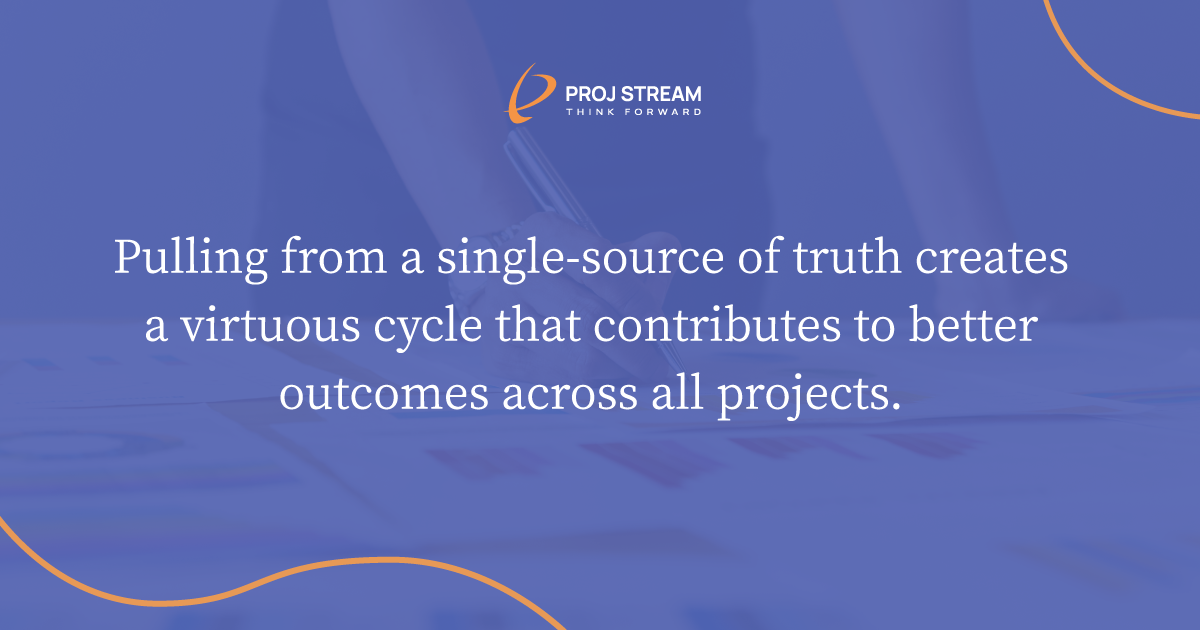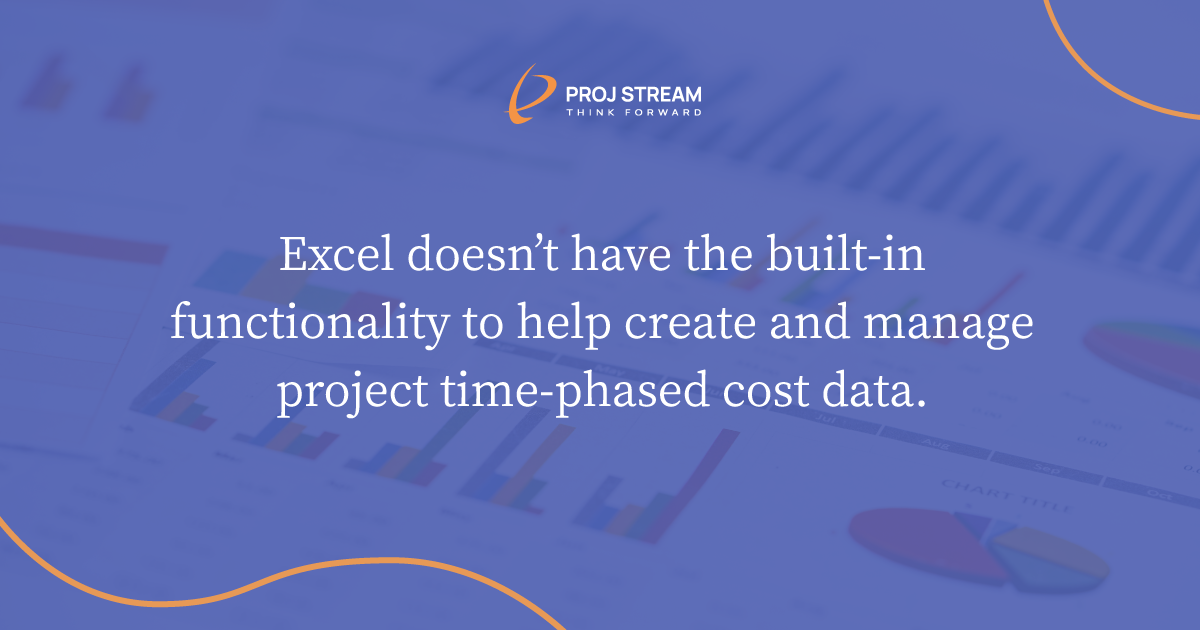Are you still using Excel for project cost management? If so, you’re not alone. But you’re also probably wondering if there’s a better way to manage your projects.
While helping clients replace Excel with our basis of estimate software for creating proposal cost estimates, we frequently discover they have also been using Excel to manage their project cost data for the execution phase – with varying degrees of success.
The common explanation is they don’t want to invest in complex software designed to support government contractual requirements for an earned value management system (EVMS). However, over time, managing project time phased cost data in ad hoc Excel spreadsheets creates its own challenges to maintain useful data that management can access and has confidence in to make decisions.
The typical scenario is that a contractor has a large portfolio of smaller projects, usually $20M or less, often firm fixed price contracts. The few contracts with EVMS requirements usually get more management oversight. However, those smaller projects without EVMS requirements may have a greater combined impact on the company’s bottom line. Management needs equal visibility and control for those projects, and there are many benefits to having data on all projects – not just the big ones.
Our clients are often stepping up from Excel to BOEMax, our cost estimating software, because BOEMax provides a better, faster, and easier way to produce a reliable data-driven basis of estimate. Similarly, MaxTeam was designed to help project managers and project control teams easily maintain a complete set of time phased cost data for the life of the project. Together they provide an end-to-end solution for creating and maintaining quality cost data from inception to project completion. Pulling from a single source of truth creates a virtuous cycle that contributes to better proposal cost estimates and project performance measurement baselines.
The Limitations of Excel
Excel is a powerful and flexible tool that can be used for a variety of purposes, including managing time-phased cost data for a project’s execution phase. The downside? There is no consistency in approach, even when there are attempts to do so.
Excel doesn’t have the built-in functionality to help create and manage project time-phased cost data such as the budget, actual costs, and estimate to complete along with calendars, rates, and resource structures. A power user must create the project's unique set of spreadsheets, formulas, and macros. There is no integration with a scheduling tool. The project manager often lacks a complete set of data to help them make proactive decisions.
What’s lacking is a central database for the cost data that could be used for a variety of project control purposes. For example, upper-level management often needs reliable project estimate at completion data to do financial analysis and assess the return on investment (ROI) for a portfolio of projects. Are they making or losing money on those firm fixed price contracts? They also need to routinely assess the likely resource demand for existing projects and what is in the proposal pipeline to proactively manage resource requirements. What adjustments do they need to make to ensure they have the right resources available at the right time?
A Better Way with an End-to-End Solution
ProjStream’s software is designed to manage the entire project life cycle, from bidding and cost estimating to project control and performance reporting. Establishing a virtuous cycle of establishing and maintaining reliable data for proposal cost estimates and cost management in an end-to-end solution provides not only better, more successful bids, but also more realistic performance measurement baselines for successful project execution.
ProjStream’s BOEMax cost estimating software and MaxTeam project cost management software were designed to support the entire proposal and project control process regardless of the size, complexity, or type of contract.
Like BOEMax, MaxTeam provides a central database all project control teams can use to maintain the complete set of time phased cost data. Users have an easy-to-use Excel-like grid view with a built-in hierarchical structure for the project’s WBS to enter and manage the time phased cost data. With a central database, management can easily access the quality source data they need for financial analysis and resource management.

How Can a Project Control Team Benefit from MaxTeam?
Using MaxTeam, the project control teams can:
Leverage the proposal cost estimate data as the basis for the budget plan after contract award.
This reduces the time required for the project startup phase and increases the quality of the budget plan. Simply copy the project from BOEMax and save it in MaxTeam. The project control team has the complete project structure already built out, including the calendar, rates, resources, and time phased cost data along with the basis of estimate rationale. They can update the WBS as needed, add other user-defined codes and fields, modify the basis of estimate details, update the task durations and resource requirements, and quickly produce the time phased budget.
Determine the appropriate project control practices needed to manage a project.
With MaxTeam, the project manager can match their management requirements with what functions they use in the tool. For example, for a short, low-risk project, the project manager may want to track and manage the project’s time phased budget, actual costs, and estimate to complete data. For a higher-risk project where the project manager wants visibility into project progress, the project control team can define accomplishment criteria and assign work package earned value management techniques so they can also calculate earned value data. For a time and materials project, the project manager may want to focus on managing tasks and ensuring they have the right mix of skilled resources. Or, they can implement the bill of material functionality for a project with a large percentage of high value material requirements.
Integrate with schedule tools.
Depending on the type of project and project duration, the project manager has the option of creating a schedule-driven time phased budget plan or estimate to complete data from the resource loaded activities. This ensures the schedule and cost data are always in alignment. This helps to increase the quality of the budget, estimate to complete, and estimate at completion. The current schedule data provides the basis to forecast the project’s completion date.
Implement a workflow process to manage changes to the budget plan.
For more complex or higher-risk projects, the project manager can use the built-in workflow functions to ensure changes are tracked and implemented as approved.
Produce data views and reports at the project or enterprise level.
A central database makes this easy to do. There is complete top down and bottom up data traceability with reliable source data to produce a variety of reports.
For example, the project manager can:
- Assess whether actual costs are running higher or lower than anticipated and determine a likely estimate at completion. They may want to compare planned versus expended for the different categories of labor, travel, material, or other direct costs. They may want to compare the project’s current burn rate to the project’s funding profile. This helps them identify areas of concern and informs their decision-making process to ensure the project meets schedule and budget objectives.
- Look for data anomalies such as actual costs outside the project’s period of performance or improper use of charge numbers.
- Maintain a bill of material and schedule so they can execute and manage material purchases. They may want to calculate price and usage variances to identify issues and make adjustments in suppliers, approach, or revisit make or buy decisions.
Corporate management can also take advantage of a central database with proposal and current project time phased cost data. For example, they can:
- Use the source estimate to complete and estimate at completion data for their financial ROI analysis such as profit and loss assessments. They can do an independent assessment of the achievability of the project manager’s estimate at completion. They can also produce a range of estimates at completion, taking into account other business factors such as a change in their business base, acquisitions, or corporate reorganization. Is the company at risk of losing money on a portfolio of projects? What can management do to minimize the loss or increase a return on investment?
- Create a combined corporate view of resource requirements for projects currently in progress or just getting started, and contracts the company is likely to win. This is dependent on the accuracy of the resource planning at the project level. Quality budget and estimate to complete data help management to effectively manage the company’s resources.
Rich data visualization and robust yet easy-to-use dashboards can be generated by MaxBoard, making access to this key data even more straightforward.

Why Make the Change to MaxTeam?
MaxTeam project cost management software was designed to help project managers and project control teams easily maintain a complete set of time phased cost data for the life of the project.
The project manager determines the functions they want to use to fit the characteristics of the project and what data they need for visibility and control. With a central database and functions designed to support the project control process, project managers and corporate management have reliable source data for project performance analysis and proactive decision making.
ProjStream's end-to-end solution helped a large defense contractor improve its proposal cost estimating and project cost management capabilities, which made a significant difference in their business development and project management processes. The contractor now manages their entire pipeline and active projects in one place using ProjStream’s tools. They’ve since increased their proposal efficiency by at least 40% and their proposal win rate by 15%. (You can read more about them in their case study.)
“This is huge,” says the VP of Finance, “because now we have best practices to manage projects both large and small, and we have all the data in one place. What this means for us is the ability to anticipate resource needs earlier than we were able to prior, and we can more accurately project estimates at completion for all projects. And maybe the biggest benefit we’ve had is adding more data-driven traceability to our estimates which have allowed us to increase the confidence we’ve built with our customers.”
Call or schedule a demo today to see how MaxTeam project cost management software can simplify and improve your project control process.


